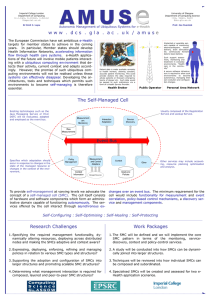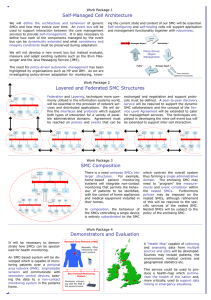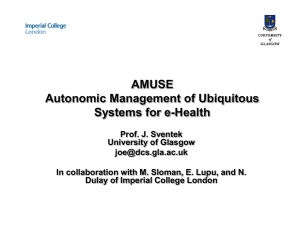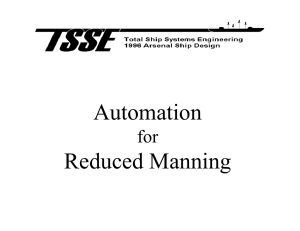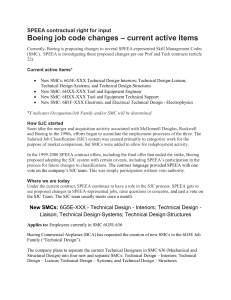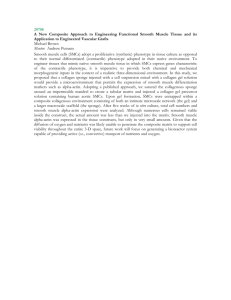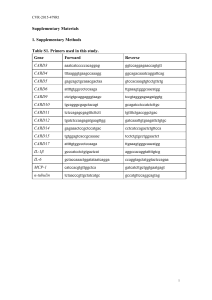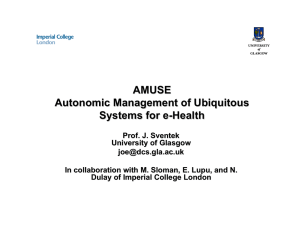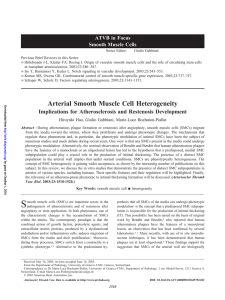AMUSE utonomic anagement of biquitous
advertisement
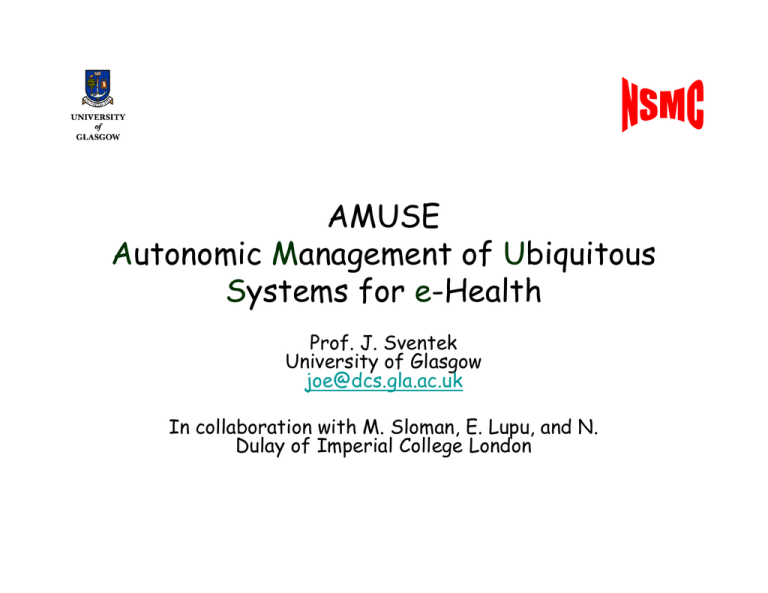
AMUSE Autonomic Management of Ubiquitous Systems for e-Health Prof. J. Sventek University of Glasgow joe@dcs.gla.ac.uk In collaboration with M. Sloman, E. Lupu, and N. Dulay of Imperial College London Executive Summary • Increasing complexity of distributed application systems leads customers to desire automated management of such systems. • Work at Agilent/Glasgow has yielded an architectural pattern and prototype implementations for closedloop management of distributed application systems. • Imperial has established itself as one of the premier research groups for policy-based management. • AMUSE is focused on integrating these complementary competencies to address automated management of e-Health applications What is closed-loop • Systems that utilize feedback are called closed-loop control systems • The feedback is used to make decisions about changes to the control signal that drives the system Closed-loop Management Pattern (Self-Managed Cell) Management Application Measurement Raw Measurement Analysis, Simulation, Optimization Provisioning Trends & Prediction Event Bus Policy Management Measurement Adapters Service Goals System Policy “System” Configuration Topology, Other “System” Under Test Two-level nesting Measurement Management Application Level n Analysis, Simulation, Optimization Raw Measurement Provisioning Trends & Prediction Event Bus Measurement Adapter Policy Management Service Goals System Policy Meas Infer Level n-1 Prov Event Bus Level n-2 Policy Agents “System” Config “System” Configuration Topology, Other Policy-based Management • Traditional management systems are imperative – i.e. the manager explicitly programs actions to take • Policy-based management systems are declarative – i.e. the manager indicates what outcomes are desired, and the management system components attempt to reach these goals • All aspects of correct system behaviour are covered by policies – e.g. security, performance, fault handling, configuration & scale, etc. Research Issues Addressed by AMUSE • • • • • • • • How to specify the required management functionality of a SMC, dynamically add/remove resources and management services into SMCs, instantiate an SMC and deploy its components across distributed nodes within a network or application? How to design adaptive and context-aware SMCs? What consistency and integrity constraints must be preserved within an SMC? How to express, deploy and enforce policies in SMCs? What information models are necessary for managed resources and the management services - including state information, performance attributes and events? How to negotiate which events are propagated? How to ensure that the SMC paradigm scales from SMCs with limited resources (e.g. a portable body area network) to SMCs with large resources (e.g. for managing an application distributed across server clusters)? What management interactions are needed for composed, layered and peer-topeer SMC structures? When to export/hide SMC management functionality? How to refine policies from composite SMCs to policies for encapsulated SMCs, particularly when the nested SMCs enter or leave the enclosing one dynamically? How to support dynamic adaptation and configuration of SMCs into larger SMC infrastructures? What policies and constraints are needed to manage this? What aspects of management are context-dependent? AMUSE Work Packages i. The specification of the generic and extensible SMCs. Within an SMC, the primary areas of research are the core services for Interaction/Adaptation, Policy, Context, and Measurement/Control. ii. Investigations into the federation of SMCs, the layering of SMCs, and their integration with legacy management systems/technologies. iii. Investigations into the composition of SMCs within a single administrative domain, iv. The development of two e-Health prototypes to validate the SMC architecture.
